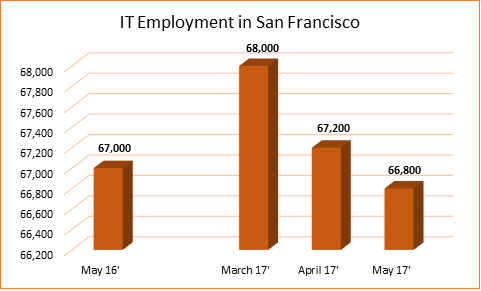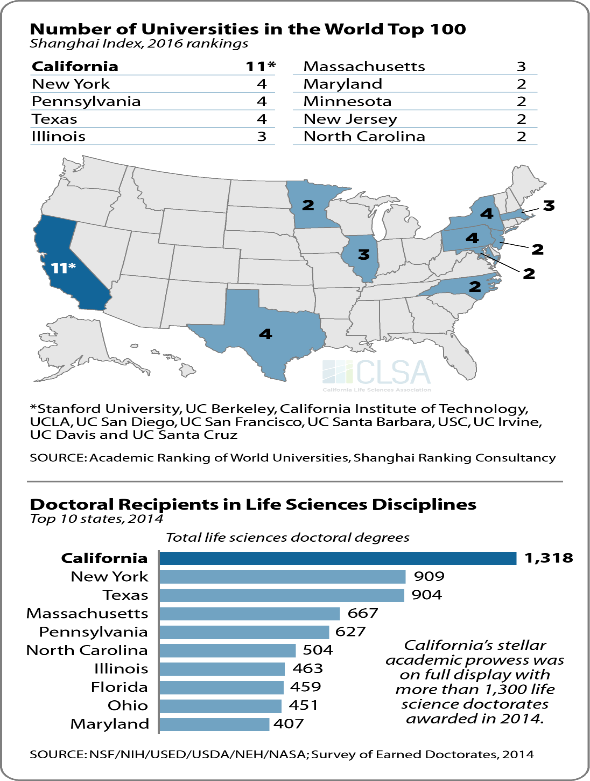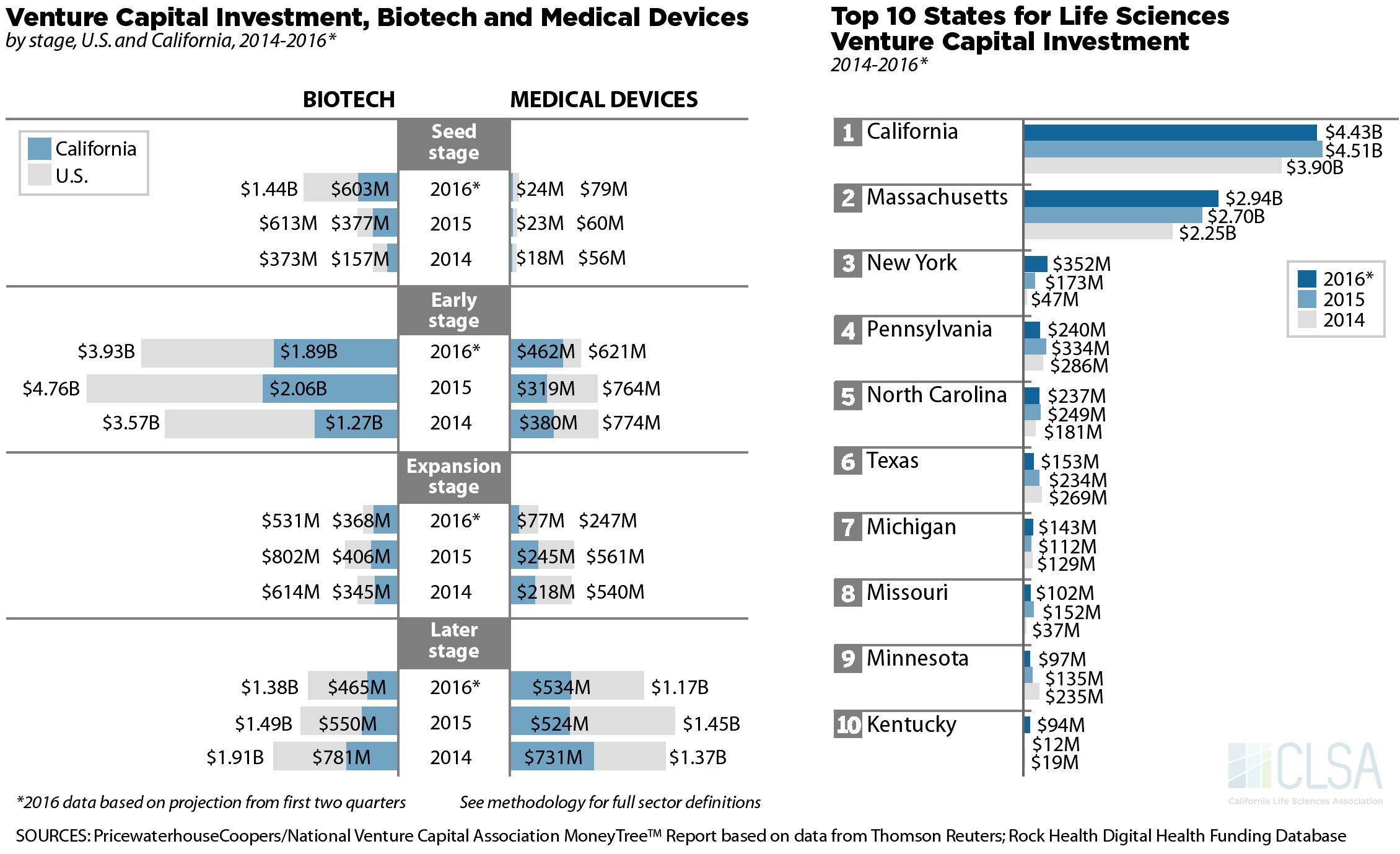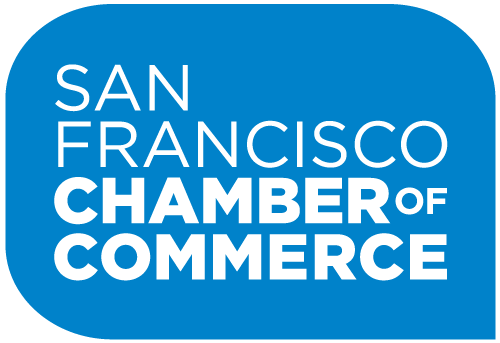IT & Software
San Francisco is home to more than 300 IT firms—including many of the leading industry players. As of December 2016, the San Francisco metropolitan area supports a workforce of over 71,000 skilled IT professionals — an increase of 165% from December 2006. The area boasts the largest aggregation of research universities and federal research institutions in the nation, and its colleges and universities produce more Ph.D. scientists and engineers than any other metropolitan area in the U.S. The University of California, San Francisco (UCSF), Berkeley and Stanford University, among others, are key drivers of innovation, entrepreneurship and technology transfer. PhDs.org ranked Stanford and UC Berkeley in the top two spots in the country for computer science PhD programs.
A number of signs suggest that the Bay Area will remain a haven for IT and software innovation. Over 80% of San Francisco households have high-speed Internet access—higher than state and national averages. In Q3 2017, the internet sector received the highest percentage of Bay Area VC investment, followed by healthcare; the two together accounted for around 70% of Bay Area VC investment. San Francisco also topped the CBRE Tech-Thirty report for the fifth straight year, and was ranked first among American cities for economic potential by fDi Magazine. The city’s superior livability, unique cultural landscape and network of leading technological research and educational institutions continue to attract the talented and educated workforce that drives successful IT businesses.

The San Francisco Bay Area’s IT industry expertise and vibrant tradition of creative arts have positioned the City as a hub for digital entertainment companies. More than 300 digital media companies operate in the Bay Area—among them are Youtube, Electronic Arts, Zynga, Twitter, Dolby Laboratories, Pixar, Sony, Sega of America, Konami Digital Entertainment America, and PDI DreamWorks SKG. In 2005, the Letterman Digital Arts Center opened in the Presidio. Since 2005, BAYCAT, the non-profit community media producer, has educated 3,500 students and trained over 250 teachers from public schools and community centers in the digital media arts. San Francisco State University is also considered one of America’s university leaders in the area of digital media. The City is primed to continue leadership in this growing creative sector, and its legendary quality of life, cultural landscape and network of leading technological research and educational institutions continue to attract the talented and educated workforce that drive successful digital media and entertainment companies.
Life Sciences & Biotech
The Life Sciences industry in Northern California is vigorously thriving, and San Francisco is a major catalyst of this development. The sector has generated close to $113.8 billion in output, increased labor income by $34 billion per year, augmented total state gross product by $68.6 billion, and helped support 302,000 direct and indirect jobs in the region. Furthermore, the sector continues to experience significant growth over the past decade, with exports reaching almost $10 billion (2015), and with average earnings exceeding 122,000 per year in San Francisco.
San Francisco is the birthplace of the contemporary biotech industry and it is home to close to 300 Life Science firms, with two of them raked in the top three US Biotech Firms by Forbes (2015). Additionally, the Bay Area hosts one of the world’s top-tier Life Sciences clusters, including biotech programs at four major research universities; Stanford University, UC Berkeley, UC San Francisco, and the University of San Francisco. These institutions help form the high-level personnel necessary to distinguish the San Francisco’s Biotech & Life Science Ecosystem from others around the world.
This singular level of educational excellence is a major driver of investment. Northern California universities received $1.4 billion in research funding from the National Institutes of Health (NHI). UC San Francisco alone received $573 million (FY2016), which was the most received by any educational institution in California and the United States.

Furthermore, due to its consistently successful research to product translatability, San Francisco’s Life Sciences firms have attracted large amounts of investment. California attracts the most Venture Capitalist investment in its Biotech industry in the entire country, amounting to $4.4 billion in 2016, with more than 70% of that figure coming from the San Francisco Bay Area alone, $3.1 billion. This amounts to close to 50% more than the next state on that list, Massachusetts. VC investment in Biotech is only second to the software industry in San Francisco, making it the thriving and expanding location for firms in the Life Sciences sector.

Environmental & Cleantech
San Francisco is making Cleantech a cornerstone of its development strategy with as many as 225 Cleantech companies established in the City. In early 2014, the San Francisco Bay area had nearly 60,000 jobs in the region’s core clean economy in a range of businesses that are working towards efficiently utilizing natural resources and helping the economy make the transition from fossil fuels to alternative energy sources. By the end of 2014, the greater San Francisco Bay Area advanced energy jobs to 104,500. The bay are also boasts the largest concentration of clean technology investors in the U.S. with abundant business opportunities for clean technology/service companies targeting the West Coast and Asia.
San Francisco was chosen as a Climate Action Champion in 2014 due to the city’s leadership in fighting Climate Change thereby cementing its position as the global hub for environmental action and innovation. San Francisco was also ranked as the number one city in the U.S in the Clean Tech Leadership Index by the Clean Edge Group in the same year.
As the leading city in clean technology adoption, San Francisco offers a payroll tax exemption for businesses that engage in clean energy technology. San Francisco’s tech-savvy business community, enlightened local leaders and world-class academic institutions make the City an ideal setting for incubating and developing new environmentally friendly technologies. Its natural resources, technological innovation and environmental leadership position it to continue leading in Cleantech and green transportation well into the future.

International Business
San Francisco serves as an international center for trade and sits among the global focal points of the rapidly developing international economies in IT, digital media, clean tech and life sciences. Long the gateway between America and the Pacific—it is the largest U.S. exporting region to Asia—the area has seen its international connections blossom with its rise to prominence in the innovation industries. More than 71 consulates and foreign trade offices are located in San Francisco. It is the tenth largest exporting region in the U.S. As the financial services epicenter of the West Coast, the City features over 30 of the largest non-American banking institutions in the country—among them are Barclays Bank of the United Kingdom, Sumitomo Bank of Japan, Banco di Roma of Italy, Banque Nationale de Paris of France, Hong Kong and Shanghai Bank of China, Industrial and Commercial Bank of China, HSBC, Lippo Bank of Indonesia and The Royal Bank of Scotland. E.U. and Latin American interest continue with the latter in prospects of starting a Latin SF that will model the success of ChinaSF.
Cosmopolitan in nature, the region has long been a favorite of international visitors and immigrants. With a local population speaking more than 100 languages and coming from every corner of the world (nearly 50% of SF residents are foreign born), San Francisco provides an international human resource that cannot be matched. Its renowned research centers and universities attract talent from around the world—a full 34 percent of graduate students at Stanford and 40 percent at UC Berkeley come from overseas.

Social & Digital Media